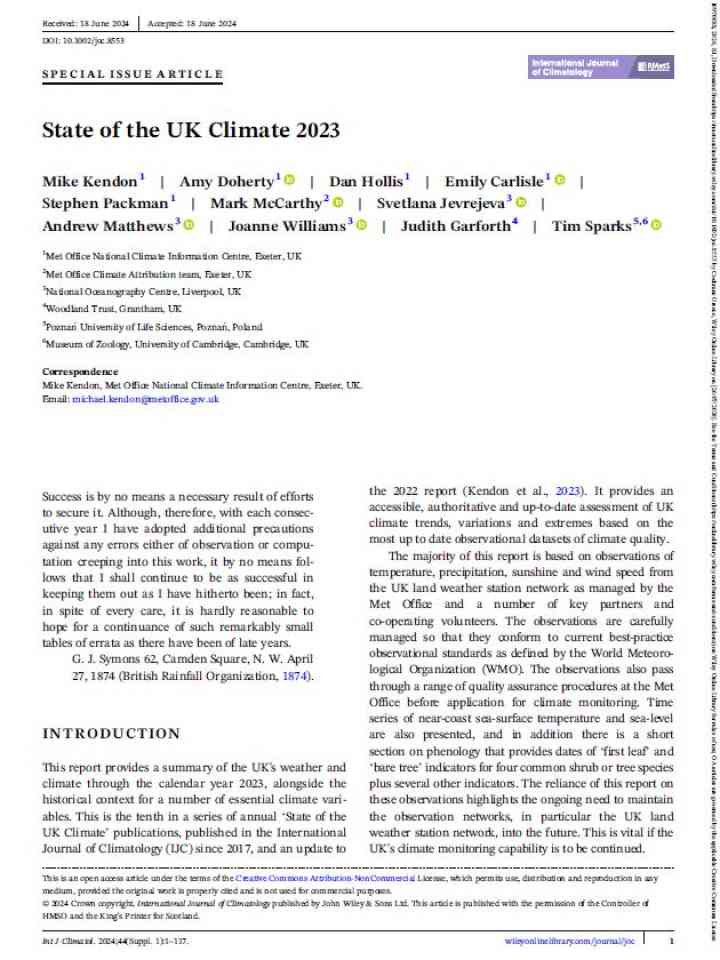State of the UK Climate 2023
This report provides a summary of the UK's weather and climate through the calendar year 2023, alongside the historical context for a number of essential climate variables. This is the tenth in a series of annual ‘State of the UK Climate’ publications, published in the International Journal of Climatology (IJC) since 2017, and an update to the 2022 report (Kendon et al., 2023). It provides an accessible, authoritative and up-to-date assessment of UK climate trends, variations and extremes based on the most up to date observational datasets of climate quality.
Using an example of 28°C, the frequency of days reaching this threshold has increased nearly everywhere across the UK. Where in the 1961-1990 averaging period only London and Hampshire recorded six or more days over 28°C, by the latest decade (2014-2023) this has spread across much of England and Wales, with frequencies in the south east increasing to over 12 days each year in many counties. Furthermore, the proportional increase across all counties over time is much more pronounced as the temperature threshold gets higher. The number of ‘pleasant’ days (daily maximum 20°C) has increased by 41% for the most recent decade (2014-2023) compared to 1961-1990. The number of ‘warm’ days (25°C) has increased by 63%, ‘hot’ days (28°C) have more than doubled and ‘very hot’ days (30°C) have more than trebled over the same period.
